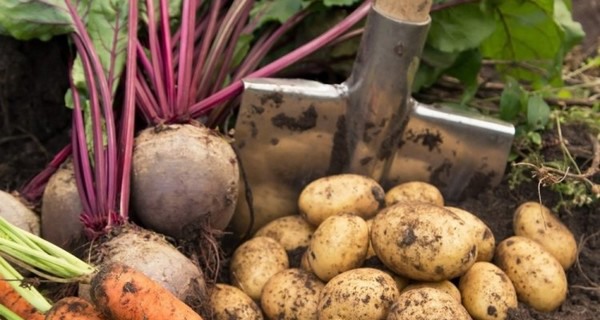Why is blockchain relevant for agrifood and how can it contribute to sustainable agrifood in the data economy? Blockchain has the potential to offer many opportunities for increasing transparency, traceability, efficiency, and the position of farmers and horticulturists in the agrifood chains, aspects that are essential for sustainable agrifood.
However, the technology also has its limitations and drawbacks. This was revealed by a study into the applicability of blockchain in agrifood commissioned by the Ministry of Agriculture, Nature and Food Quality (LNV) and conducted by Wageningen University & Research. Programme leader Lan van Wassenaer: “We want to unravel the myths surrounding blockchain.”
Reliable and easy sharing of information
“Many people jump to conclusions at the mention of blockchain, without knowing the full story,” says Van Wassenaer. “But our imaginations run wild about Bitcoin and other cryptocurrencies, and initiatives using blockchain are being started all over the world.” Van Wassenaer explains the principle clearly: “It is an application of information technology in which different components share information in a reliable and easy way.” There are numerous formats and applications of the technology, but they have a number of things in common.
In a blockchain, the participants in an information system, such as farmers, producers, and vendors, can be seen as the nodes or intersections in a digital network. Each node has all the information from the entire network. This means that there is no need for a central overseer when information is transferred between parties: the nodes in the network can check with each other to see if their copies are the same.

If one of the nodes finds deviating data, then it is clear that that information is not correct. It enables data to be shared reliably and transparently, and all components of that data remain accessible to everyone.
More transparent agrifood chains
This transparency is a significant advantage when using blockchain in the agricultural food chain. Consumers want to know the origins of their food, something that is difficult at the moment because the chains are so complex. “You can use blockchain to improve transparency and traceability,” says Van Wassenaer. “It will make the traceability of products in the food chain easier and can prevent fraud.”
The agricultural sector can also apply blockchain to improve efficiency and, ultimately, sustainability. Because there is no need for a central governing body, digital transactions can be automated. Blockchain also gives farmers, horticulturists, and other stakeholders the power to decide what information they want to share with others. In a blockchain network, you can use “smart contracts” to establish the conditions under which information is shared.
Blockchain areas of concern
However, blockchain is not a cure-all. The complexity of the information control process may cause blockchain to be less efficient than a central database. Cryptocurrencies also require a lot of computing power and in turn, a lot of energy to process transactions. Van Wassenaer explains: “This is a specific problem with cryptocurrencies. If applied in agriculture, blockchain can control data exchange in a more energy efficient way.”
Where do we stand?
Blockchain has been implemented by several parties in agrifood already. In the Netherlands, Albert Heijn has a blockchain platform, and there are hundreds of initiatives globally that use blockchain in agriculture and horticulture. The objective is to improve sustainability or create more transparency for consumers.
This does not mean that blockchain has already become the new standard for the agricultural sector. Many initiatives are still in the early stages. Van Wassenaer explains: “The current system is still robust. So if you want to introduce blockchain, you have to reorganise a working system, and not every party involved does well with transparency. Some parties, such as brokers, base their business model on a lack of transparency and do not necessarily want to move to a more transparent system.”
Recommendations for blockchain in agriculture
What are the next steps? “The most important are profound digitisation and a clear vision for the data economy,” says Van Wassenaer. “Digitisation is needed as the basis of the data economy and a vision for the data environment is important for creating frameworks for the ownership and sharing of data. Regulations are much needed for this.” Just as in goods transport, you need an infrastructure, a vehicle, and rules. The same applies to information transport: You may drive a fast car, but you also need a motorway and traffic lights.”
To achieve this, the researchers state that a “vision for the data environment” is needed. The government and policy makers should develop a long-term vision and plan for data and the sharing of data. Secondly, establishing a digital observatory is recommended in order to keep up with and manage the developments of block chain applications efficiently. Van Wassenaer: “That would require regulations like we have for traffic.” Thirdly, the researchers recommend supporting current initiatives in their development with block chain prototypes that work already. Digital transformation occurs more quickly when existing techniques are use, the “common grounds”. This can also demonstrate the effects of blockchain for stakeholders in the agrifood sector.
Vision for the future
Blockchain is not a stand-alone solution. It is a catalyst and enabler of digital transformation. Van Wassenaer thinks that other technologies besides blockchain will facilitate innovation in agriculture, such as artificial intelligence (AI) and robotics. Additionally, technologies such as new measuring sensors can increase the data stream in the agricultural sector. “Blockchain is not the future itself, but it will be part of it.”
 For more information:
For more information:
Wageningen University & Research
www.wur.nl
